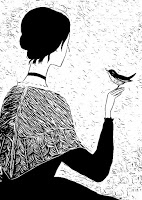Andrew Motion on how to write a love poem
Penning poetry for the one you love? Here are five basic rules by Britain’s former poet laureate
Andrew Motion
Wed 11 Feb 2016
T
raditionally, love poems were written in sonnet form, but they don’t have to be. Find the form that suits what you are going to say. It could be a haiku or even a limerick. Be true, be forthright, and don’t get caught up in other people’s ideas of what being in love is like, or some inherited ideal of a love poem. Concentrate on the realities of the person that you are dealing with. Don’t disguise them as some kind of ideal – they are going to want to feel that’s my poem, that’s my expression, that’s what we did together.
Here are my five rules:
1 Speak from your heart. Poets have in their toolbox every trick of rhetoric and linguistic structuring - from alliteration to zeugma. The toolbox is there to be ransacked, but the strength of your feelings might be diverted if you get too tied up with technical stuff.
2 Simply to say “I love you” or “you’re beautiful” is not interesting. Remember William Carlos Williams’ advice about writing - there is no truth but in things. So be particular. Things have a fascination that abstractions don’t. A reader will be more likely to identify with your poem if there are references to personal situations or particular features - be it their body, attitude or behaviour.
3 A sense of humour is not at odds with passionate intensity. Catching the ridiculousness of a situation doesn’t betray the subject or misrepresent the strength of your feelings. And don’t shy away from flaws. The whole business of being attracted to people is connected to their imperfections.
4 Pay attention to rhymes and rhythms and the sound your words make. The sound of the thing is as important as the dictionary definition of the words.
5 Revise, revise, revise. Our first thoughts are almost never our best.



No comments:
Post a Comment